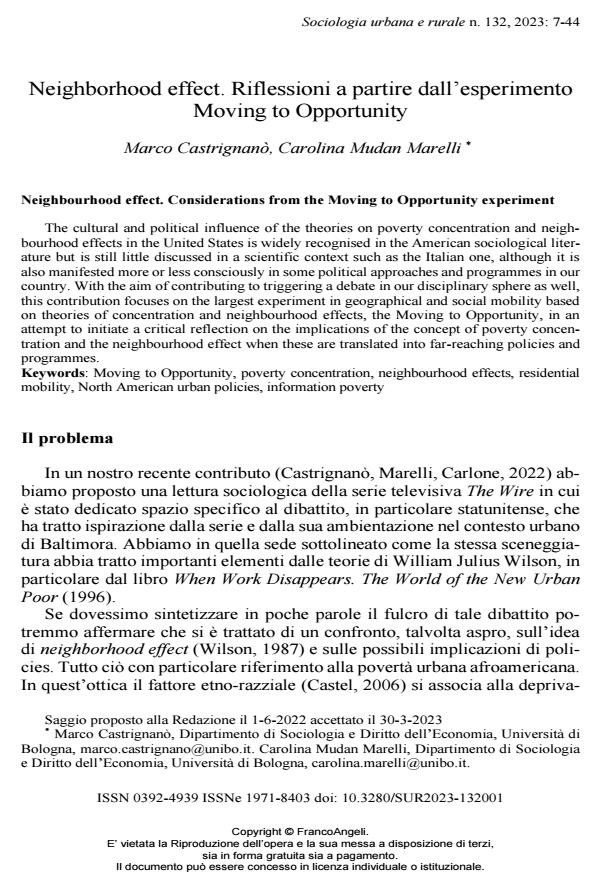Neighborhood effect. Riflessioni a partire dall’esperimento Moving to Opportunity
Titolo Rivista SOCIOLOGIA URBANA E RURALE
Autori/Curatori Marco Castrignanò, Carolina Mudan Marelli
Anno di pubblicazione 2023 Fascicolo 2023/132
Lingua Italiano Numero pagine 38 P. 7-44 Dimensione file 406 KB
DOI 10.3280/SUR2023-132001
Il DOI è il codice a barre della proprietà intellettuale: per saperne di più
clicca qui
Qui sotto puoi vedere in anteprima la prima pagina di questo articolo.
Se questo articolo ti interessa, lo puoi acquistare (e scaricare in formato pdf) seguendo le facili indicazioni per acquistare il download credit. Acquista Download Credits per scaricare questo Articolo in formato PDF

FrancoAngeli è membro della Publishers International Linking Association, Inc (PILA)associazione indipendente e non profit per facilitare (attraverso i servizi tecnologici implementati da CrossRef.org) l’accesso degli studiosi ai contenuti digitali nelle pubblicazioni professionali e scientifiche
L’influenza culturale e politica delle teorie sulla concentrazione di povertà e sugli effetti di quartiere negli Stati Uniti è ampiamente riconosciuta dalla letteratura sociologica americana e non solo, ma risulta ancora poco discussa in un contesto scientifico come quello italiano, benché essa si manifesti più o meno consciamente anche in alcuni approcci e programmi politici del nostro paese. Con l’obiettivo di contribuire a innescare un dibattito anche nel nostro ambito disciplinare, questo contributo si focalizza sul più grande esperimento di mobilità geografica e sociale fondato sulle teorie della concentrazione e degli effetti di quartiere, il Moving to Opportunity, nel tentativo di avvia una riflessione critica sulle implicazioni del concetto di concentrazione di povertà e di neighborhood effect quando questi vengono tradotti in politiche e programmi di vasta portata.
Parole chiave:Moving to opportunity, concentrazione della povertà, effetti di quartiere, mobilità residenziale, politiche urbane nord americane, povertà di informazioni.
Marco Castrignanò, Carolina Mudan Marelli, Neighborhood effect. Riflessioni a partire dall’esperimento Moving to Opportunity in "SOCIOLOGIA URBANA E RURALE" 132/2023, pp 7-44, DOI: 10.3280/SUR2023-132001